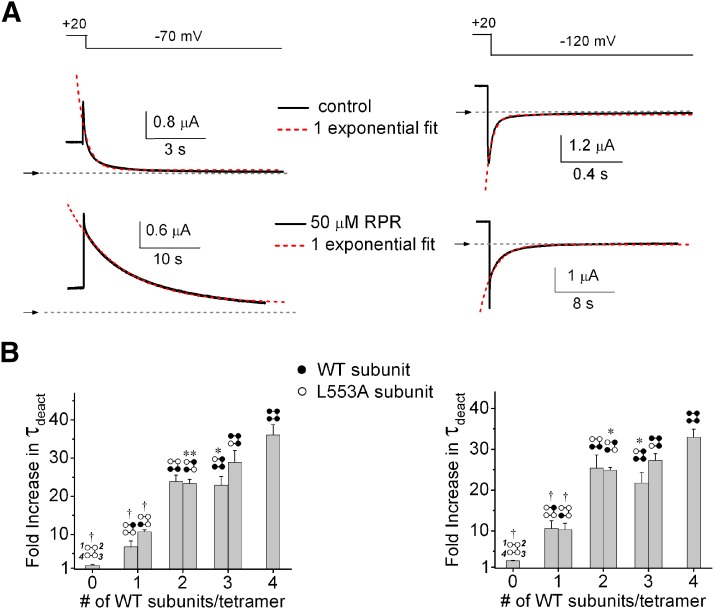Fig. 3.
Slowing of deactivation by RPR is dependent on the number of WT subunits in a concatenated hERG1 tetramer. (A) Representative current traces of LA2/WT2 tetrameric channels in an oocyte before and after treatment with 50 µM RPR. Channels were activated with 4-second pulse to +20 mV, and tail currents were elicited at a Vret of −70 mV (left panels) or −120 mV (right panels). Upper panels depict voltage pulse protocol; middle panels show control tail currents; lower panels show tail currents after treatment of oocyte with 50 µM RPR. Tail currents were fitted to a single exponential function (dotted red traces) to estimate τdeact for the slow component of deactivation. (B) Bar graphs indicating that the fold increase in τdeact by 50 µM RPR at −70 mV (left panel) or −120 mV (right panel) increases as a function of the number of WT subunits contained in a concatenated tetramer (P < 0.0001, one-way analysis of variance; n = 4–6). *P < 0.05; **P < 0.01; †P < 0.001 compared with WT4 channels.

